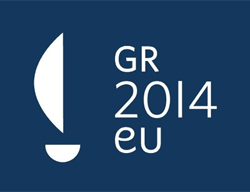External Trade
The legal basis of the External Trade policy are Articles 131 to 134 of the Treaty establishing the European Community.
The European Union is the world’s biggest trader, accounting for 20% of global imports and exports. Free trade among its members underpinned the successful launch nearly 50 years ago of the EU. The Union is therefore a leading player in efforts to liberalise world trade for the mutual benefit of rich and poor countries alike.
A global player
The EU’s basic philosophy is that it will open its market to imports from outside provided its trading partners do likewise. It is also keen to liberalise trade in services. But it is ready to make allowances for developing countries by allowing them to open their markets more slowly than industrialised countries and is helping them integrate into the world trading system.
The harmonisation of its common external tariff (CET), as it was known, meant that EU countries had to participate as a single group in international trade negotiations. External trade thus became one of the first instruments of European integration requiring member states to pool their sovereignty.
A firm commitment
As a result, the EU has been a key player along with its trading partners in the successive international rounds of trade liberalisation negotiations. The aim of these rounds, which are now held in the framework of the World Trade Organisation , is to reduce tariffs and remove other barriers to world trade. Following earlier rounds, the EU’s average tariff on industrial imports has now fallen to 4%, one of the lowest in the world.
A network of agreements
The EU, in addition to its participation in Doha and previous WTO rounds, has also developed a network of bilateral trade agreements with individual countries and regions across the world.
It has trade agreements with its neighbours in the Mediterranean basin and with Russia and the other republics of the former Soviet Union.
The wider world
The EU’s trade policy is closely linked to its development policy. The Union has granted duty-free or cut-rate preferential access to its market for most of the imports from developing countries and economies in transition under its general system of preferences (GSP). It goes even further for the 49 poorest countries in the world, all of whose exports – with the sole exception of arms – are to enjoy duty free entry to the EU market under a programme launched in 2001.
The EU has developed a new trade and development strategy with its 78 partners in the Africa-Pacific-Caribbean (ACP) group of countries aimed at integrating them into the world economy. It also has a trade agreement with South Africa that will lead to free trade between the two sides, and it is negotiating a free trade deal with the six members of the Gulf Cooperation Council (GCC) – Bahrain, Kuwait, Oman, Qatar, Saudi Arabia and the United Arab Emirates.
The EU has trade and association agreements with Mexico and Chile in Latin America and has been negotiating a deal to liberalise trade with the Mercosur group – Argentina, Brazil, Paraguay and Uruguay.
It does not, however, have specific trade agreements with its major trading partners among the developed countries like the United States and Japan. Trade is handled through the WTO mechanisms, although the EU has many agreements in individual sectors with both countries.






 Svejo
Svejo Twitter
Twitter Link4e
Link4e Pipe
Pipe Web-bg
Web-bg Bghot
Bghot Lubimi
Lubimi Novinitednes
Novinitednes Ping
Ping Facebook
Facebook Myspace
Myspace Mix
Mix Del.ico.us
Del.ico.us Reddit
Reddit Digg
Digg Stumbleupon
Stumbleupon Myweb Yahoo
Myweb Yahoo Google Bookmarks
Google Bookmarks Google Buzz
Google Buzz

